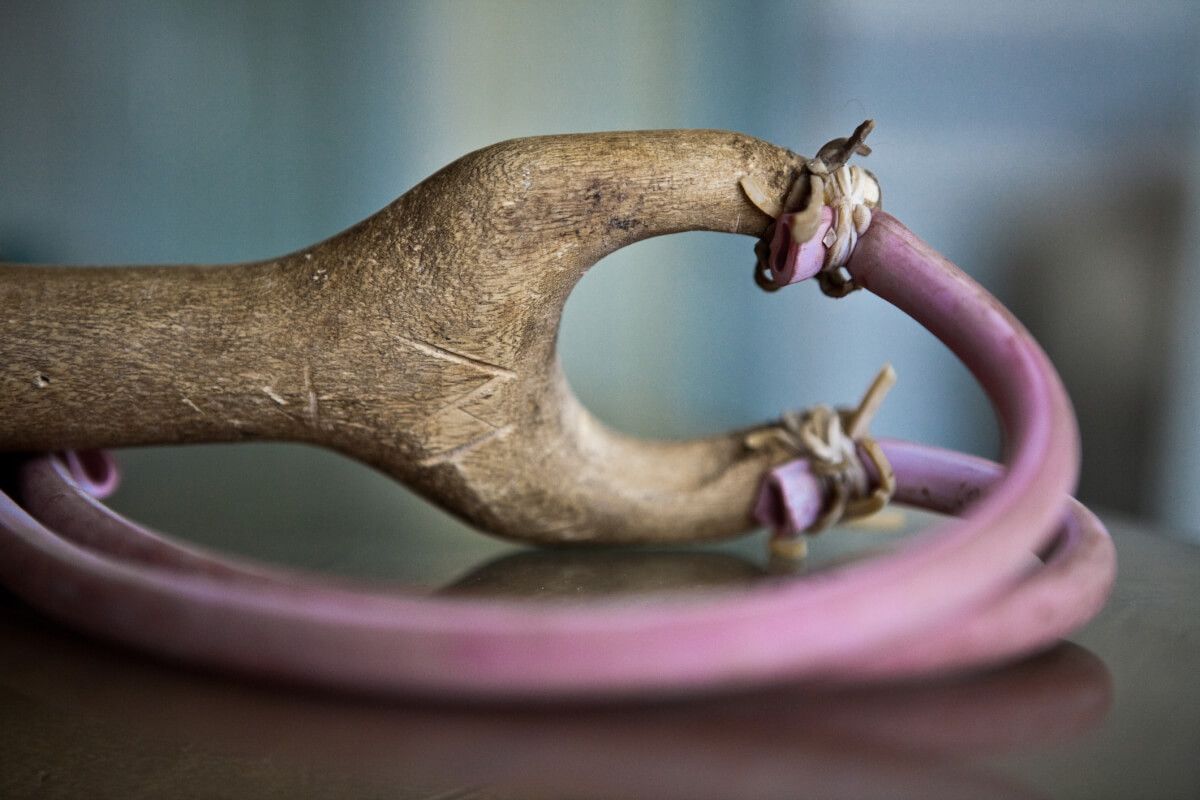When SHTF and you need to hunt for food, it’s practical to know how to craft as many weapons as you can. Being able to craft a spear or bow is definitely important, but what if you’re unable to find a pole or stick that’s long enough? What if there’s no string for a bow? When you need to hunt small game for food, you can make a relatively simple weapon – a slingshot.
What you’ll need
The materials required to craft a slingshot are easy to find; the hardest part would be the elastic band. If you can’t procure rubber bands, you can use a tire’s inner tube. Here’s a list of the materials and tools you’ll need:
- A Y-shaped branch (with each “prong” angled at 30 degrees)
- Bushcraft/survival knife
- Elastic band
- Securing cordage (fishing line, paracord inner strands)
- Piece of leather or cloth
Making the slingshot
Crafting the weapon is relatively easy, as long as you are able to find the right materials, and don’t build it haphazardly.
Step 1.
Find the right wood. Fallen dead tree branches are a good source for the handle, just be sure to obtain a Y-shaped branch that isn’t rotten or cracked. You can even opt to cut out a Y-shaped branch from a live tree.
Get a branch that’ll give you a 2-inch thick handle and a height of 5-10 inches (whichever fits your hand best) is ideal.

Step 2.
For a more secure, comfortable grip, “polish” the wood by shaving off the bark.
If your branch was taken from a live tree, dry it out by slowly rotating it over a campfire, or leaving it in hot coals for about 10 minutes. Depending on the wood, you might have to do this several times. Make sure that all the moisture is gone, and the wood is not too hot to handle.
Step 3.
Carefully shave the tops of the posts or “prongs” of any protrusions or rough edges with your knife. Ideally, the tops should be clean and level, since the elastic band will go over them when you pull it back to fire.
Doing this also makes the elastic band last longer, as there won’t be any edges that’ll cut and wear out the band over time.

Step 4.
Cut notches about half an inch from the top of the prongs, going all the way around. These are where you’ll tie string or cordage to secure the elastic rubber bands.
Step 5.
Prepare the elastic bands. These can be elastic bands, bungee cords, surgical tubing or strips cut from a tire’s inner tube. Cut two equal lengths, about 6-7 inches long. There should be enough elasticity to enable you to pull back, and enough return to give your projectile sufficient force to kill small game (this is a survival tool and not a toy).
Step 6.
Using cordage, tie down one end of the band about an inch long to the front of the prong. Ensure that the cordage is wound tightly over the band and within the notch for a secure fit. The bands should be kept firmly fixed to prevent the band coming off when you pull the slingshot.
Step 7.
Cut out a “pouch” from a strip of leather or cloth. The resulting pouch should be a rectangle measuring about 4 inches high and 6 inches wide. Punch holes on either side of the pouch, then loop through the ends of the band and securely tie them off.
Final notes
The slingshot is a crude weapon, but with the right ammunition and level of skill, it’s an indispensable part of your survival arsenal. With it, you can hunt small birds, squirrels and rabbits for food.
Always keep in mind that this is a weapon, and not a mere child’s toy. Never aim it at anything you don’t want destroyed or killed. Bear in mind some guidelines when hunting for small game with your hunting slingshot:
– Store-bought slingshot ammo is ideal, but simple stones will do nicely.
– Stones and pebbles that you find by the river are a good choice due to their smooth, aerodynamic shape.
– The best ammo for your slingshot should be a combination of durability and aerodynamics; use ammo that doesn’t chip or shatter on impact.
– Large ball bearings (3/8 inch in diameter) and even loose nuts and bolts are good ammo alternatives.

– When hunting, sneak up on small game quietly; you’ll have to get close for the slingshot to be effective.
– For maximum lethality and minimal cruelty, always aim for the head of the animal you’re hunting.
– When hunting burrowing prey, a headshot is especially important; if you fail to kill prey outright, they could retreat to their burrow and the carcass will be unobtainable – a waste of effort and good meat.



